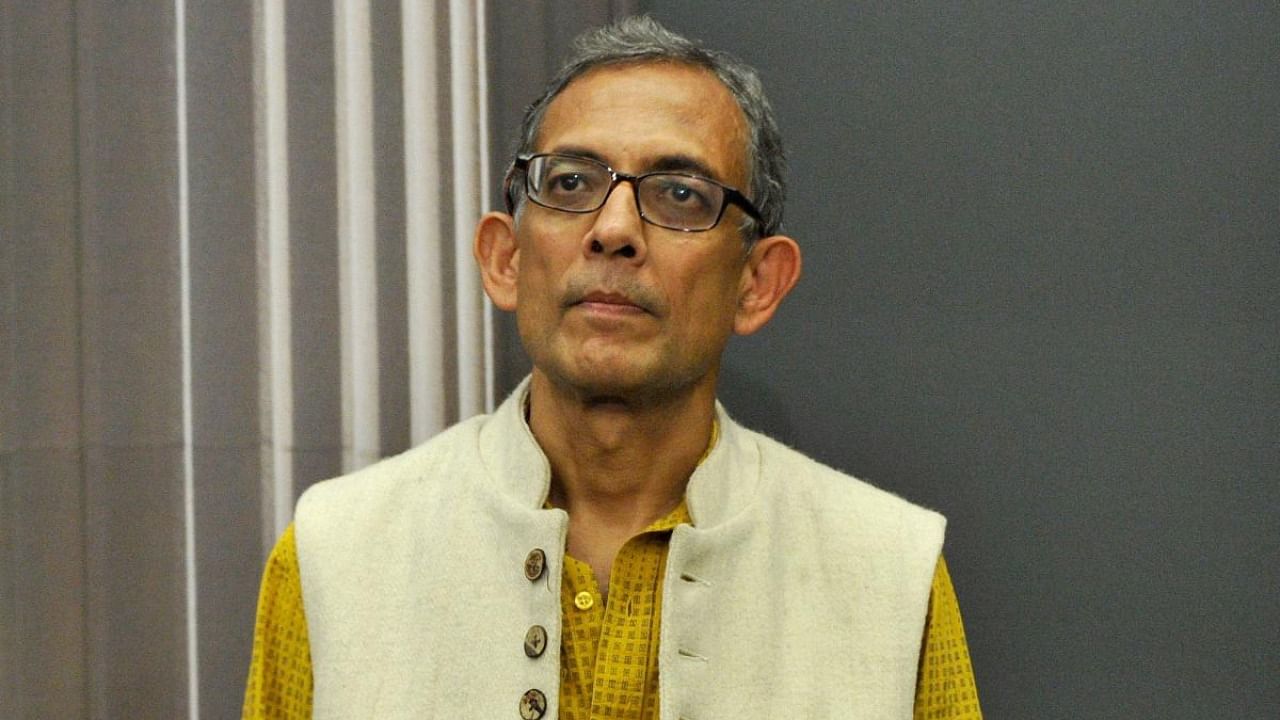
India should not take the drop in its Global Hunger Index ranking "seriously" as the methodology used for the exercise is 'model-based' and not survey-based, renowned economist and Nobel laureate Abhijit Vinayak Banerjee said on Thursday.
Addressing virtually an event organised by industry body CII, Banerjee further said the credit mechanism does not work well in India as banks do not want to give loans to small and medium enterprises.
According to the 2021 Global Hunger Index (GHI), prepared jointly by Irish aid agency Concern Worldwide and German organisation Welt Hungerhilfe, India has slipped to the 101st position out of 116 countries, from its 2020 position of 94th.
It is now behind its neighbours Pakistan, Bangladesh and Nepal.
"I think they are essentially model-based. I don't think there is any survey that says anything.
"We should not take those numbers (GHI) seriously, they put them out, but they have no idea where they are getting them," he said while replying to a question on the dip in India's rank in the Global Hunger Index.
Banerjee said there was no on ground survey by publishing agencies of the Global Hunger Report
"This (GHI) is coming entirely from small surveys here and there. But scaled surveys that we need, had not happened, so we don't really know," he opined.
Banerjee , currently a professor of economics at Massachusetts Institute of Technology, in countries like Ghana and Kenya there is no way to get these(undernourishment, child wasting, child stunting) data.
"All model based, it's sort of calculation of this much income and then in India, this means these people will be pushed below the poverty line ... phone based survey, which have their own biases because many people don't have phones," he observed.
The GHI score is calculated on four indicators -- undernourishment, child wasting (share of children under age of five who are wasted i.e who have low weight for their height, reflecting acute undernutrition), child stunting (children under age of five who have low height for their age, reflecting chronic undernutrition) and child mortality (mortality rate of children under age of five).
Banerjee further noted that there was a demand shortage in India, especially coming from the low income population in the last five years.
"Under MNREGA, the government should announce that people will have an option of 150 days of wage employment if they want to...I think they won't use it if the economy recovers, but people will feel confident to spend.
"Giving people the confidence to spend, is what the small scale industry sector needs," he said.
The renowned economist emphasised that even a short term demand stimulus would help.
"Shrinking of small scale industries has benefited the formal sector," he added.
Talking about high inflation in India, Banerjee said inflation has always been complicated in the country.
Referring to a recent SBI report which had said about 80 per cent of the economy is now formal following the digitisation drive and the pandemic, he said the number does not make sense.
"...that number, if we take it seriously, which I loathe to do, would be so depressing but that would mean we have lost something like 20 per cent GDP or something for that to happen.
"GDP must have gone down by that much. If the other sector has not grown by...so much, and one sector has dropped by 30 percentage of GDP, you see what that means, you get something like 15-20 per cent drop in GDP net," he pointed out.
Banerjee said he hopes this has not happened and stressed that data collection in India really needs to improve.
According to the SBI Research report, the digitisation drive and pandemic-induced emergence of the gig economy have led to a faster formalisation of the economy, with the share of the informal sector shrinking to just 15-20 per cent in 2021 from 52.4 per cent in 2018.
Check out the latest DH videos: